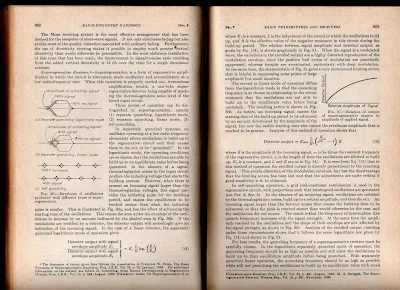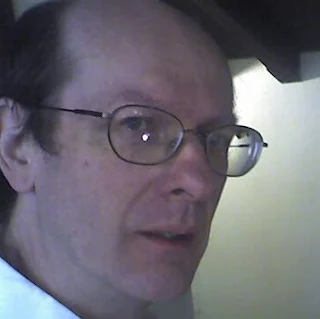Bill:
First off thanks for the wonderful podcast. I only just discovered it and I have loaded as far back as I can go on my Phone. I have been listening to it every waking moment. Though I fear that even at one or 2 a month no amount of commuting, dishwashing or bathroom cleaning will allow me to catch up with you.
I so identify with your idea of the Knack. I was forever taking things apart, my mom had to remove anything that could be used as a tool from her home for my first few years as even at age 2 I was into clocks, cabinets and basically anything that wasn't nailed down. Until your podcast I hadn't even heard of the International Geophysical Year, but discovered I missed it by only 3 months being born in March of 59. I do think though that those of us that were even a little knackish were encouraged on our way by the Space program.
Even though I grew up in Canada, I was riveted to the TV for every space launch, touch down or space walk. Many of my first memories are watching grainy broadcasts from Gemini and then on to Apollo. Even now I stayed up to watch the Mars rover land those few years ago.
Radio was always a special interest for me from the First Short wave radio I got from my grand father. I remember discovering WWV, BBC VOA and the Netherlands english language programming. This of course launched me into a frenzy of stringing wires higher and higher much to the chagrin of my parents. My poor dad that was an arts major didn't know what to think of me.
I'd always wanted to get in to ham radio but the code requirement held me back. My dyslexia kicked me really bad. I had the little tapes from radio shack and I'd work and work but got no where. So i resolved myself to just shortwave listening.
I was laughing when you talked about your relationship with Regenerative Radios as one of the first radio projects I built was the "Science Fair Globe Parol Regenerative Radio" From radio shack. Here is a link to the thing http://www.ohio.edu/people/postr/bapix/rsglobep.htm I still have it at my mom's house. The last time I put batteries in it it would at least get WWV. Which is no small feet when you realize I built it with one of those Weller Soldering Guns that you could reseal canned goods with. I'm sure if I opened it up now there'd be blobs of solder the size of Cicada's in there.
I was just listening to Episode 147 where you were talking about the All American 5 tube radio. I must have tore down 20 of those things as a kid. Your Right they were dangerous as anything you could get. Most of them the chassis was hot if the plug was in wrong and there wasn't like a fuse or any safety equipment in there to stop you from hurting yourself. Yes they were cheep and made so without a transformer, and all the tube heaters in series with the panel bulb for a bit of protection to prevent a surge on power up. But one other feature they had was that when they were originally produced there was still some DC mains power around and they would run if you put in the Plug the right way. My old electronics teacher claimed that you could run them off 3 45 volt batters on the Farm in a pinch. Though 19 40's battery technology I'm not sure if that was a practical solution. Though In High School that's what we had to learn. Learned to tune, debug and repair those puppies.
After high School I went into the phone company and later made my way as a lot of us Knackish people in to the computer/software industry. And low and behold after about 30 years they dropped the Code requirement and now living in the States I went out and finally got a license.
I just wish I had found your podcast sooner as I would have done things a little differently. However I have managed to do some serious kit building. I have built two TNC's, one for the beaglebone and one for the Pie. I have built one softrock receiver and another Softrock emsamble RXTX that I'm just trying to figure out how to make work. I also built though it's not really a kit a Kx3 that is my main HF rig.
I thought I was really interested in the computer radio connection but wow when I see what you have done with the BITX and the manhattan build I'm thinking I want to build a rig that maybe I can run some JT65 or PSK31 on. I know what you mean about the Phone and SSB but right now stuck in the city of Chicago my antenna space is limited and i'm surrounded by power poles so I have a lot of noise no matter what I do.
One thing I need to talk to your buddy Pete as in the left over spare time I have, between work family and radio I'm trying to complete the BSC that I never did during my misspent youth. But I'm stuck at the final project. I need something that needs some code and could be written up as a research paper I keep thinking there has to be a radio project here somewhere.
Anyhow that's enough I'm sure you get lots of people with their stories but I thought a little of what I encountered might be interesting. I really appreciate the podcast love all the personal stories combined with the tech talk. Keep up the good work. I'm looking forward to getting current.
Donald L. Gover KC9ZMY
P.S. I have woken up twice as of late thinking I heard a Gong followed by "Oooo That's Awesome" Maybe I'm listening a little to much :)
P.P.S Again catching up on the podcasts though my podcast listening time is a little reduced as I bought your darn book that's very interesting! But I wanted to make sure that I did inform the Knackers Union, whom I believe that Steve Snort Solder Smith is the enforcement officer that I had already constructed my 40m low pass from 4 state QRP. I have provided photographic evidence of it's construction and promise not to QRP on 40M without it.
.webp)





















